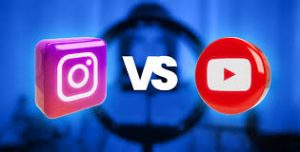YouTube Versus Instagram Influencer Marketing
 Today, many brands have come to the realization that influencer marketing is the way of the future. Influencer marketing is an ideal fit for brands looking to increase their online presence and reach their core niche audiences since influencers usually gain their influence from specific online subcultures. For this reason, influencer marketing companies such as HireInfluence have come to play an important role in the larger digital business and marketing ecosystem that has formed at the turn of this decade.
Today, many brands have come to the realization that influencer marketing is the way of the future. Influencer marketing is an ideal fit for brands looking to increase their online presence and reach their core niche audiences since influencers usually gain their influence from specific online subcultures. For this reason, influencer marketing companies such as HireInfluence have come to play an important role in the larger digital business and marketing ecosystem that has formed at the turn of this decade.
Although all brands can potentially benefit from influencer marketing, agencies that specialize in different types of influencer marketing should have a good understanding of the differences between different social media platforms and their strengths and weaknesses for promoting different brands. YouTube and Instagram are two of the biggest platforms of the digital age, but they are fundamentally different in ways that agencies have to understand in order to take full advantage of what makes the platforms unique.
For example, Instagram influencer marketing agencies should be experts in short-form, visual content, since this is the most successful type of content on Instagram. On the other hand, YouTube influencer marketing agencies should know the ins and outs of long-form content, because YouTube is better suited for longer video content that tells a story, analyzes a subject, or teaches audience members how to do something.
Furthermore, influencer marketing companies should be familiar with the differing core demographics that each platform has cultivated over the years. Instagram is more popular with younger audiences such as millennials and Gen Z users. On the other hand, YouTube has a much wider and universal appeal, with users ranging from young children to older adults.
Agencies should also be familiar with the types of conversions or engagement each platform is more suited for. Instagram is ideal for quick social commerce since Instagram posts can integrate features such as in-app shopping. YouTube is ideal for SEO and cultivating a positive brand image. YouTube videos are routinely indexed high on Google searches, and long-form videos do a better job of telling a brand’s stories and educating audiences about products.
User behavior metrics are also important for designing messaging strategies for brand influencers. On Instagram, people interact with posts more frequently, but viewers have relatively short attention spans, so content must be designed with this in mind. YouTube tends to garner higher engagement and if a video is truly interesting, users will watch to the end. As a result, YouTube influencers usually cost more, but Instagram is a cost-effective way to get more traction on several posts.
The choice of a platform for influencer marketing will largely depend on a brand’s specific goals. Is the brand looking for quick conversions or a more long-term strategy for awareness and engagement? Also, who is the core audience demographic that a brand is trying to reach? These are the sorts of questions marketing agencies should ask when organizing partnerships between brands and influencers. Both of these platforms can be a boon for a marketing campaign, but only strategic use of them will bring out their full potential.
